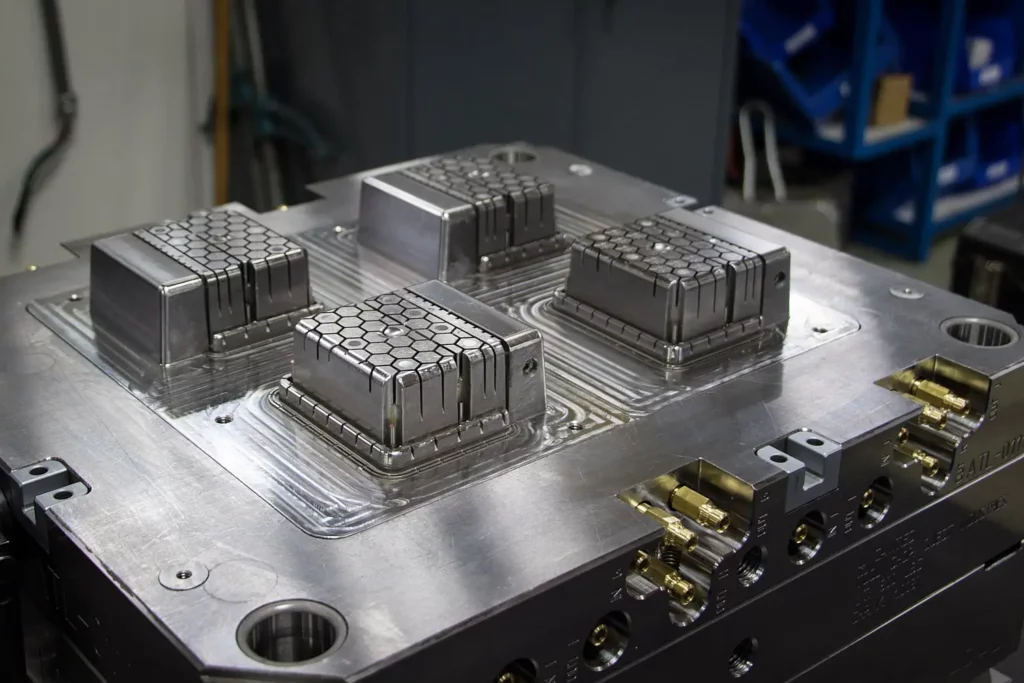Choosing Between Soft and Hard Tooling Injection Molding
Injection molding solutions exist across different production and volume needs. Generally, injection molding tools may be produced via soft or hard tooling. Tooling is the skeletal system of every manufacturing and injection molding operation. It is simply defined as the production of various components and accessories that a machine needs to produce end parts. Tooling may refer to the production of components like fixtures, molds, patterns and jigs.
Knowing what method to use typically hinges on several factors including cost, volume, material and end use. It is important to select the appropriate process to manufacture products that look, feel and function as intended. The major difference between either tooling in injection molding is that soft tooling is used before a product design, concept and function is finalized. Soft tooling is employed when products are to be prototypes, used for small runs, bridge tooling or design verification. Hard tooling, in contrast, is used when product specifications have been finalized and it is time for ass production.
Soft tooling
Soft tooling is generally used on materials that are not production grade options. These materials may include pre-hardened steel, silicone, rubber, carbon fiber and fiberglass. They are generally not as hard and durable as the intended material for the end part, and experience more frequent wear and tear.
Soft tooling is suitable for production runs of less than 100 parts. These parts do not have tight tolerances and each mold cavity may not perform beyond 25-50 shots. It is the ideal option when injection molding parts for prototype mold or bridge production for pre-market entry at lower costs. It is also excellent for low-volume manufacturing for prototypes to verify or test a design concept, market testing and evaluation by customers because of its quicker turnaround time.
The benefits of soft tooling include its cost-effectiveness, material selection range, ease of molding and producing parts with complex geometries. The downside of this tooling method is the lack of ruggedness of the parts and its lower temperature tolerance relative to hard-tooled components.
Hard tooling
Hard tooling is a method of high-quality tooling that is employed when a part is ready to go to mass production. Hard tooling requires the use of durable metals like stainless steel or tougher alloys that can go through multiple production cycles and manufacture parts in high volume.
It is very suitable for manufacturing parts with strict tolerances, parts that need to comply with standards and parts that are ready to be used right off the production line. Hard tooling delivers high-precision, durable and highly accurate parts. The machining process is generally more refined to deliver parts that are well finished with more cavities for simultaneous production.
The advantages of hard tooling include more durable, heat and chemical stable, tighter tolerance parts. The parts manufactured with hard tooling can make significantly more parts than soft tooling up to a million parts. Parts that do not require any form of assembly can be used right off the line when hard tooling is used in their production.
Hard tooling parts can be heat-treated and post-processed for impeccable finish and part aesthetic. The downsides are the initial cost of tooling, longer manufacturing lead time and the increased effort of machining these parts.
Choosing between Soft and Hard tooling
The right tooling option is dependent on the purpose of the part. Price wise, hard tools will cost multiple times the cost of soft tools. The rewards is however evident in the quality of the part produced. At Firstpart, we recommend a combination of both; with soft tooling, you can mitigate the risk of the part production and prototype faster and cheaper. After carrying out your marketing test with the handful of units, you can proceed to hard tooling to manufacture parts that are finessed, perfected and concluded as the market entrant.
First Part Injection Molding Services in China
FirstPart offers excellent quality, plastic injection molding services for a wide array of plastic part projects in China. We also offer low-volume manufacturing that serve small quantities from 50 to 10000 parts for small and medium scale establishments. Away from low-volume manufacturing, all our factories boast of an always-running mass production capacity for CNC, 3D printing and Injection molding services. Our engineers are always available to advice on the best processes, materials and design optimization to ensure cost-savings, quick turnaround and the production of parts that are 100 percent defect and issue free. Submit your design for a free evaluation and contact us on how to get started on your next projects.










